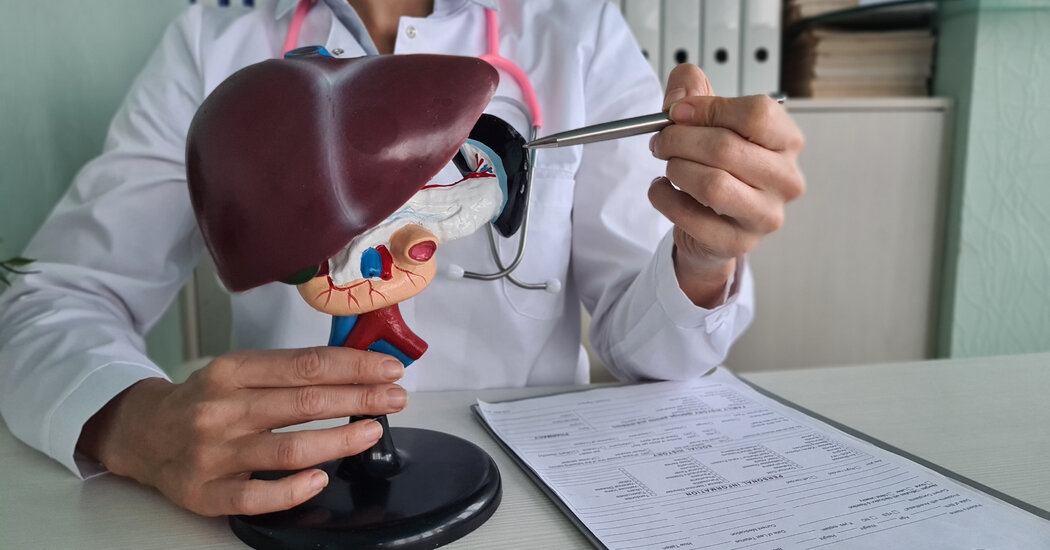Four in 10 people are thought to have a potentially serious liver condition known as MASLD. Reversing it is possible if you catch it early.
Geraldine Frank was looking forward to celebrating her 62nd birthday when her son noticed some yellowing in her eyes. He wasn’t too concerned but wanted her to see a doctor.
It turned out that Ms. Frank’s eyes were showing signs of jaundice. She had cirrhosis, severe scarring of the liver that usually takes years, or even decades, to develop.
Ms. Frank had been overweight and saw doctors for other conditions, her son David Frank said, but she never mentioned hearing any concerns about her liver. “How is it possible, with all the medical advances, that nobody knew this was a problem?” he said.
Cirrhosis can occur in the late stages of metabolic dysfunction-associated steatotic liver disease, or MASLD, which happens when fat builds up in the liver and can lead to inflammation and scarring. MASLD, which was known until recently as nonalcoholic fatty liver disease, is estimated to affect nearly 4 in 10 people worldwide. It is the fastest-growing reason that people require liver transplants in the United States.
It’s possible to stop its progression or even reverse the damage, but patients often aren’t diagnosed until it’s too late to do so.
“It’s largely asymptomatic, until it’s not,” said Dr. Meena B. Bansal, chief of the division of liver diseases at the Icahn School of Medicine at Mount Sinai in New York. “And usually when it’s symptomatic it’s quite advanced.”
